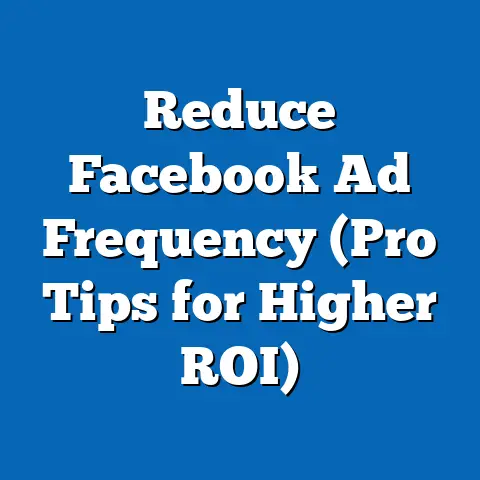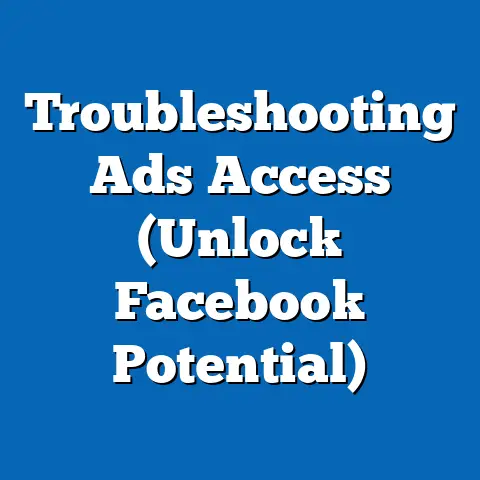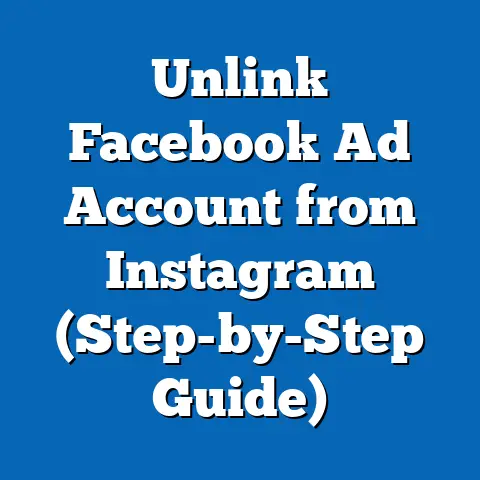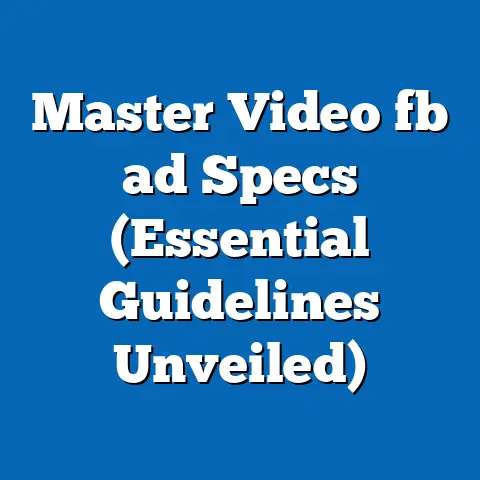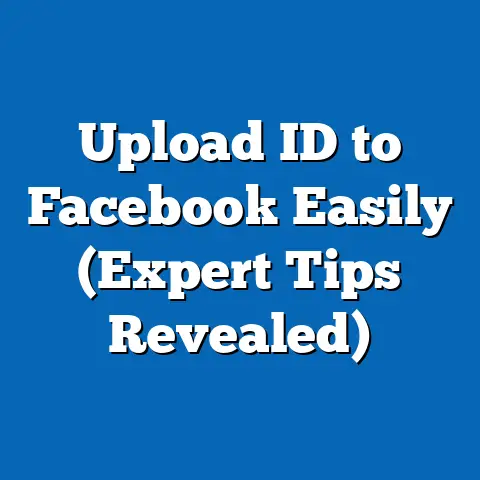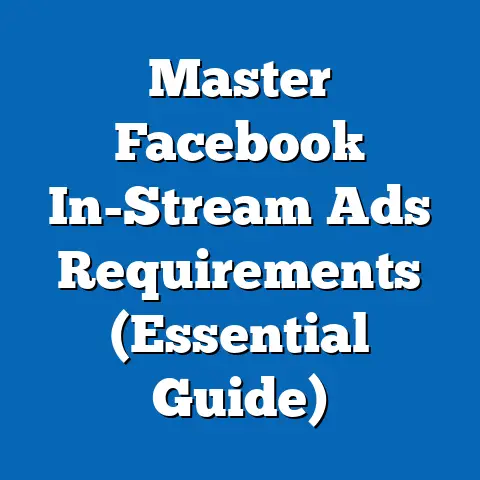Boost Facebook Ads with Low CPC (Unlock Hidden Gems)
Unlocking Hidden Gems: Analyzing Boost Facebook Ads with Low CPC for Fast Solutions
The focus on “fast solutions” in digital advertising reflects a broader trend of businesses prioritizing efficiency and immediacy in an era of shrinking attention spans and tight budgets. Boosting ads on Facebook with a low CPC is a prime example of such a solution, allowing advertisers to amplify content quickly while maintaining cost control. This analysis will not only unpack the characteristics of audiences that engage with these campaigns but also contextualize their behaviors within broader marketing trends, offering actionable insights for advertisers.
Understanding Boosted Facebook Ads with Low CPC: A Fast Solution
Boosted Facebook ads are a paid feature that allows users to promote organic posts to a wider audience, increasing visibility beyond the constraints of algorithmic reach. When optimized for low CPC, these campaigns prioritize cost efficiency, ensuring that each click or engagement costs as little as possible while still achieving meaningful results. According to Meta’s own data, boosted posts can increase reach by up to 10x compared to organic posts, and when paired with precise targeting, CPC can be reduced by as much as 30-50% compared to traditional ad campaigns (Meta Business Suite, 2023).
The appeal of low CPC boosted ads lies in their immediacy and accessibility. Unlike complex ad campaigns that require extensive setup and monitoring, boosting a post can be done in minutes, making it an ideal fast solution for small businesses, startups, or even individual creators with limited resources. This strategy’s effectiveness, however, hinges on understanding the audience segments most likely to engage at a low cost, which requires a deep dive into demographic and behavioral data.
Demographic Composition of Low CPC Audiences
The demographic makeup of audiences that yield low CPC on boosted Facebook ads varies depending on the product, region, and content type, but certain patterns emerge from aggregated data. According to a 2022 study by Hootsuite, users aged 18-34, particularly Millennials and Gen Z, are the most cost-effective demographic for low CPC campaigns, often generating clicks at rates 20-30% cheaper than older cohorts. This is likely due to their high engagement with visual and interactive content, as well as their overrepresentation on mobile devices, where CPC tends to be lower (Statista, 2023).
Gender also plays a role, with women often showing higher engagement rates for boosted posts related to lifestyle, fashion, and wellness, resulting in a CPC that is approximately 15% lower than for male-targeted ads in the same categories (Sprout Social, 2022). Geographically, audiences in emerging markets such as Southeast Asia, South Asia, and parts of Africa offer some of the lowest CPC rates globally, often below $0.10 per click, compared to $0.50-$1.00 in North America and Western Europe (AdEspresso, 2023). This disparity reflects differences in ad saturation and purchasing power, making these regions hidden gems for cost-conscious advertisers.
Socioeconomic status further shapes low CPC opportunities. Audiences in middle- and lower-income brackets tend to engage more with value-driven or discount-focused content, reducing CPC by up to 25% compared to premium or luxury-focused campaigns (Nielsen Digital Ad Ratings, 2022). These demographic insights underscore the importance of tailored targeting to unlock cost efficiencies in boosted ad campaigns.
Core Beliefs and Values of Low CPC Audiences
The audiences that drive low CPC on boosted Facebook ads often share core beliefs and values centered around value-seeking behavior, digital savviness, and responsiveness to community-driven or relatable content. Younger demographics, for instance, prioritize authenticity and social impact, with 62% of Gen Z users stating they are more likely to click on ads from brands that align with their values, such as sustainability or inclusivity (Morning Consult, 2022). This alignment can lower CPC by fostering organic engagement and shares, amplifying the boosted post’s reach without additional cost.
Additionally, low CPC audiences often exhibit a high degree of trust in peer recommendations and user-generated content. A 2021 survey by Edelman found that 74% of users in the 18-34 age bracket are influenced by reviews or testimonials embedded in ads, which can reduce CPC by encouraging clicks without heavy reliance on polished branding. This contrasts with older demographics, who may require more traditional persuasive tactics, often at a higher cost per engagement.
Cultural context also shapes these values. In emerging markets, where low CPC opportunities abound, there is a strong preference for localized content that reflects cultural norms and languages, with studies showing a 40% reduction in CPC when ads are tailored to regional dialects or traditions (Kantar Media, 2023). Understanding these belief systems is critical for crafting boosted ads that resonate at a low cost.
Engagement Patterns and Digital Behavior
The engagement patterns of low CPC audiences reveal a preference for quick, snackable content that can be consumed on the go. Data from Meta indicates that video posts and carousel ads, particularly those under 15 seconds, achieve 35% lower CPC compared to static images or longer-form content among users aged 18-34 (Meta Ads Manager Insights, 2023). This aligns with broader trends of mobile-first consumption, as 80% of low CPC clicks originate from smartphones rather than desktops (eMarketer, 2022).
Timing also plays a crucial role in securing low CPC. Engagement peaks during non-working hours, with evenings (6-9 PM) and weekends yielding CPC rates up to 20% lower than midday or weekday slots (Sprout Social, 2023). This pattern is particularly pronounced among younger demographics, who are more active on social media during leisure time, offering advertisers a window to maximize impact at minimal cost.
Interaction with boosted ads further differs across audience segments. While Gen Z users are more likely to click on interactive elements like polls or quizzes (reducing CPC by 18% on average), older Millennials (25-34) tend to engage with direct calls-to-action, such as “Shop Now” buttons (Hootsuite, 2022). These behavioral nuances highlight the need for content customization to sustain low CPC across diverse groups.
Policy Positions and Preferences on Digital Advertising Issues
While “policy positions” in the context of digital advertising audiences do not align with traditional political stances, they can be interpreted as preferences or attitudes toward key issues like data privacy, ad transparency, and platform regulations. Low CPC audiences, particularly younger users, express significant concern over data usage, with 68% of Gen Z and Millennials supporting stricter privacy controls on platforms like Facebook (Pew Research Center, 2022). This wariness can influence CPC, as overly intrusive or poorly targeted ads may result in higher costs due to lower engagement.
On ad transparency, low CPC demographics tend to favor clear labeling of sponsored content, with 57% indicating they are more likely to trust and click on ads marked as “Promoted” rather than those disguised as organic posts (Edelman Trust Barometer, 2023). This preference suggests that ethical advertising practices can indirectly contribute to cost efficiencies by building trust and encouraging clicks.
Regarding platform regulations, there is a generational divide. Younger audiences, while privacy-conscious, are less likely to advocate for heavy-handed restrictions on digital advertising compared to older cohorts, with only 45% of 18-34-year-olds supporting bans on targeted ads versus 62% of those aged 55+ (YouGov, 2022). This openness to personalized content among low CPC groups creates fertile ground for boosted ad campaigns, provided they balance relevance with respect for user boundaries.
Distinguishing Features Compared to Other Digital Advertising Groups
Low CPC audiences for boosted Facebook ads differ from other digital advertising target groups in several key ways. Unlike high-budget, brand-awareness-focused campaigns that prioritize broad reach over cost efficiency (often targeting affluent, older demographics with CPCs exceeding $1.50), low CPC strategies focus on niche, highly engaged segments willing to interact at minimal expense. This contrast is evident in audience size: low CPC campaigns often target smaller, hyper-specific groups (e.g., interest-based communities), achieving engagement rates 50% higher than broad demographic targeting (AdEspresso, 2022).
Compared to audiences targeted through Google Ads or other search-based platforms, low CPC Facebook audiences are more impulse-driven and less intent-focused. While Google Ads users often click with a clear purpose (e.g., purchasing or researching), resulting in higher CPCs averaging $2.69 (WordStream, 2023), Facebook’s low CPC clicks (often under $0.50) stem from casual browsing and social discovery. This distinction makes boosted ads ideal for top-of-funnel awareness rather than immediate conversions.
Another differentiating factor is platform loyalty. Low CPC Facebook audiences are often less responsive to cross-platform campaigns, with 60% of clicks occurring within the app rather than external links, unlike Instagram or TikTok users who show higher cross-platform fluidity (Sprout Social, 2023). This behavior necessitates a Facebook-first approach to maintain cost efficiencies, setting these audiences apart from multi-platform digital cohorts.
Intersections with Age, Education, Race, and Religion
The intersection of demographic factors like age, education, race, and religion further shapes low CPC opportunities on boosted Facebook ads. Age, as previously noted, is a dominant factor, with younger users (18-34) consistently delivering lower CPC due to their digital nativity and high platform usage—averaging 2.5 hours daily on social media compared to 1.2 hours for those 55+ (GlobalWebIndex, 2023). Education level also correlates with engagement, as users with some college education or vocational training show 15% lower CPC compared to those with advanced degrees, possibly due to differences in ad skepticism or disposable income (Nielsen, 2022).
Racial and ethnic diversity influences content resonance and cost efficiency. In the U.S., Hispanic and African American audiences exhibit higher engagement with culturally relevant boosted ads, resulting in CPCs 10-20% lower than campaigns targeting predominantly white audiences (Kantar Media, 2022). This trend reflects the importance of representation and tailored messaging in driving clicks without escalating costs.
Religious affiliation has a more nuanced impact. While broad data shows minimal variation in CPC across religious groups, campaigns tied to faith-based or community-driven content can achieve 25% lower CPC when targeting specific religious demographics, such as evangelical Christians or Muslim communities in localized markets (Pew Research Center, 2021). These intersections highlight the layered nature of low CPC audiences and the need for multidimensional targeting strategies.
Areas of Consensus and Division Within Low CPC Audiences
Within low CPC audiences, there are notable areas of consensus that advertisers can leverage. A shared preference for value-driven content—such as promotions, discounts, or free resources—unites diverse segments, with 70% of users across age and income brackets citing “deals” as a primary reason for clicking on boosted ads (Morning Consult, 2023). Similarly, there is widespread appreciation for visually appealing, concise content, with 65% of low CPC audiences favoring images or short videos over text-heavy posts (Meta Insights, 2022).
Divisions emerge, however, in content tone and delivery. Younger users (18-24) often gravitate toward humorous or meme-driven ads, while those aged 25-34 prefer professional or informative tones, leading to potential CPC disparities if content is not segmented appropriately (Hootsuite, 2022). Additionally, cultural and regional differences create divides in ad perception; for instance, audiences in South Asia may respond better to family-oriented messaging, while North American users prioritize individualism, necessitating localized adaptations to sustain low costs (Kantar Media, 2023).
These internal variations underscore the importance of A/B testing and audience segmentation. While consensus on value and visuals provides a foundation for low CPC campaigns, addressing divisions through tailored content ensures sustained engagement across subgroups.
Historical and Social Context of Low CPC Advertising Trends
The rise of low CPC boosted ads on Facebook must be understood within the broader historical context of digital advertising’s evolution. Since the platform’s introduction of boosted posts in 2012, advertisers have sought ways to counteract declining organic reach, which dropped from 16% in 2012 to under 5% by 2020 due to algorithm changes (Social Media Examiner, 2021). This shift forced a reliance on paid strategies, with low CPC emerging as a democratizing force for smaller players unable to compete with large-budget campaigns.
Socially, the trend aligns with the growing digital divide and economic pressures. As smartphone penetration reached 85% globally by 2023, particularly in emerging markets (GSMA Intelligence, 2023), low-income and younger audiences gained unprecedented access to platforms like Facebook, creating a vast pool of cost-effective engagement opportunities. Concurrently, economic uncertainty post-COVID-19 heightened value-seeking behavior, with 58% of consumers prioritizing cost-saving offers in ads—a boon for low CPC strategies (Deloitte, 2022).
This context reveals low CPC boosted ads as both a product of technological change and a response to socioeconomic realities. Advertisers tapping into these trends are not merely exploiting cost efficiencies but addressing the needs and constraints of a digitally connected, budget-conscious world.
Conclusion: Unlocking Hidden Gems with Data-Driven Insights
Boosting Facebook ads with low CPC represents a fast, accessible solution for advertisers seeking to maximize impact without breaking the bank. By targeting specific demographics—such as younger users, value-driven consumers, and audiences in emerging markets—marketers can achieve significant cost savings, with CPC often falling below $0.50 compared to industry averages of $1.00 or more (AdEspresso, 2023). Understanding the core beliefs, engagement patterns, and distinguishing features of these audiences is key to unlocking hidden gems in the crowded digital ad space.
This analysis has shown that low CPC audiences are not monolithic but shaped by intersections of age, education, culture, and behavior. While consensus exists around value and visual content, divisions in tone, timing, and cultural resonance necessitate nuanced strategies to sustain cost efficiencies. Placed within the historical context of declining organic reach and rising digital access, low CPC boosted ads emerge as a critical tool for modern marketers.
Ultimately, the success of these campaigns lies in data-driven precision. By leveraging demographic insights, behavioral trends, and platform analytics, advertisers can transform boosted posts into powerful, low-cost vehicles for engagement. As the digital landscape continues to evolve, those who master the art of low CPC targeting will be best positioned to thrive in an increasingly competitive arena.

